L’Anse aux Meadows: Norse Viking Village
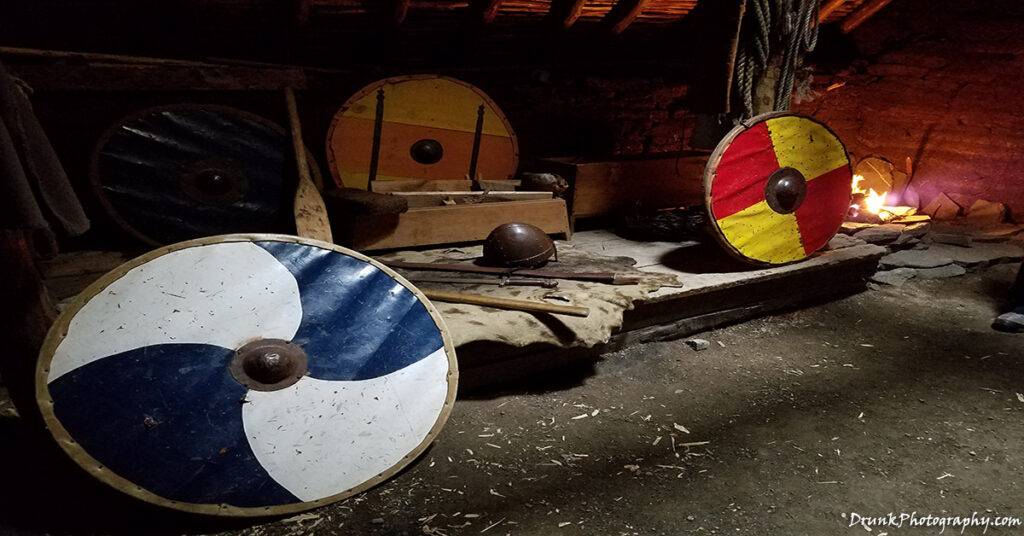
Subd. D, NL A0K 2X0, Canada


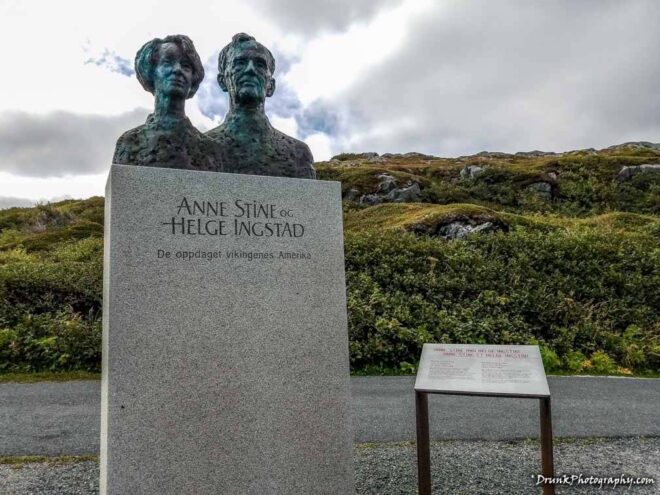
In the 1960s, a couple of renown Viking archaeologist Helge Ingstad, and his wife Anne Stine Ingstad, made their way to Canada, to put their minds, and archaeological clues, together to reveal an important finding that changed, or updated, outdate Norse history that the world came to know, until recent times. Helge came to Newfoundland and Labrador, searching for signature signs of Vikings encampments, which he felt would be low turf walls or low mounds when he saw this land’s makeup, because he knew of their work in Greenland and Iceland. He was known the top tracker of this and he figured that there would be evidence of them landing this the northern peninsula of where the Gulf of Lawrence was, and clearly, there were indication of there possibly being a good site to investigate considering the text found in multiple Norse sagas, from which many Hollywood movies and even Anime were created- more on that later. He landed in the area we know now as L’anse aux Meadows to do some research, because if you overshoot Greenland and continue west, you’re going to bump into North America, so he figured there had to be traces of their existence in North America too, and likely previous stories matched L’Anse aux Meadows . Ingstad drew up plans for what he expected to see, based on studies of Greenland and Iceland, and went around to ask the Newfoundlander locals (Newfies) if they knew any geographical areas matching his descriptions of what he expected to see from his studies and L’anse aux Meadows’ leading subject matter pointed to an area that may match what Ingstad was looking for, but dismissed it, as did all the local fishermen as just some “old Indian camp” – they didn’t have a lot of respect for the Indigenous populations, even in Canada, if you didn’t know. Newfoundlanders didn’t even bother to inspect that land that whole time, and wrote it off. That was a good enough clue for Ingstad, based on the Newfies’ ignorance about their own land, he knew he could study the land and know it was largely untouched area for a while. That “old Indian camp” turned out to be a great archaeological find in the area, because it was in reality, an old Viking camp! I’m sure the ignorant Newfies were kicking themselves in the butt for just overlooking that area. The problem with the area is that when Ingstad arrived, it was just flat land, but he found they key evidence that gave him reason to excavate, it was a pin that Vikings used to pin a cloak down, and from there, the whole world opened up to dig the whole site up. What he knew was that sometimes, when the Vikings would vacate an encampment, they’re leave no evidence of behind.
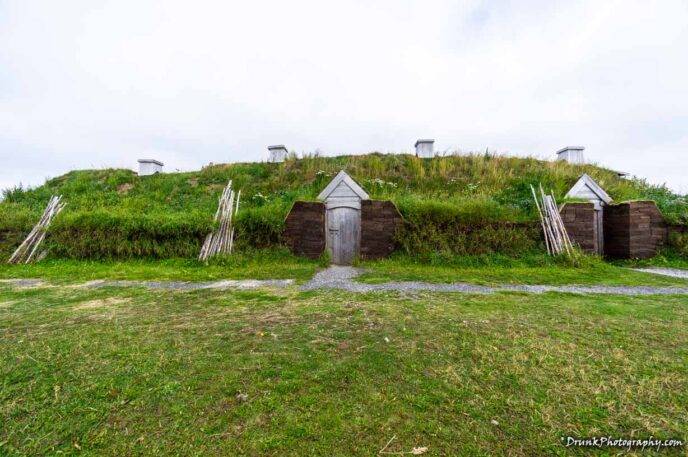
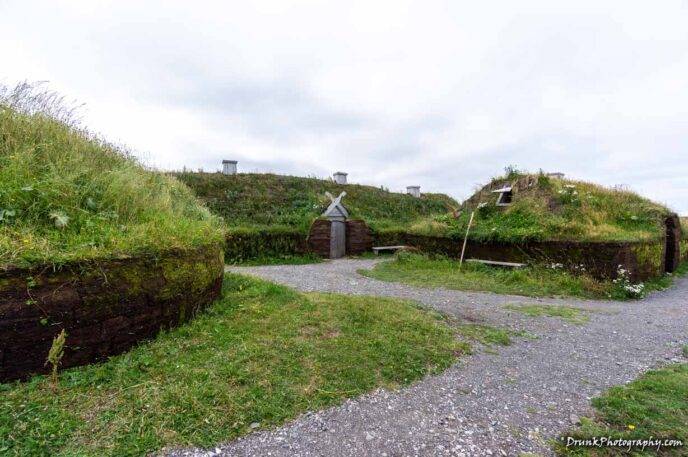
That’s what happened at L’anse aux Meadows, the Vikings buried or burned down everything they built, in the area, to erase their footprint. After Ingstad excavated the land, there was the proof, a lot of original Viking artifacts were located at L’anse aux Meadows, and since 1975, have been on display, as they were unearthed, repaired or re-created for dispay, in modern time, and that’s what you see when you visit L’anse aux Meadows today. L’anse aux Meadows has been completely re-constructed, utilizing the same techniques of the Norse, structures made of stone base, wood, and peat sod combinations, just as they did in Greenland and Iceland. After all that work he did to prove that Vikings came to North America, he was ignored by the world, because they dismissed this work and said there was no proof that his work was true, and only in recent times is this being recognized as 100% legitimate, even though other archaeologists have since also studied the collections since he first unearthed it. Better late than never, for the recognition, I guess. They unearthed more than 800 unique artifacts that were not all native to the land, in terms of tools, and the structures from timber and such that’s not the style of design or architecture that Indigenous tribes were using or building, it was completely different tools and architecture, so you cannot accredit the findings in L’anse aux Meadows to the Indigenous people of that area, as most local Canadians dismissed it as. You also have to remember that Newfoundland and Labrador were not even part of Canada until 1949, and was its own Government, officially, until then. Most Canadians have never even made it out that far, even when I went, I confirmed this with locals and officials in Newfoundland. The fact that Newfounland was not part of Canada until recent times, that was the reason I wanted to go to Newfoundland in the first place, and not to SAINT JOHNS where everyone else goes, because that meant it had its own spin to how they did things, and that meant DIFFERENT history to learn.

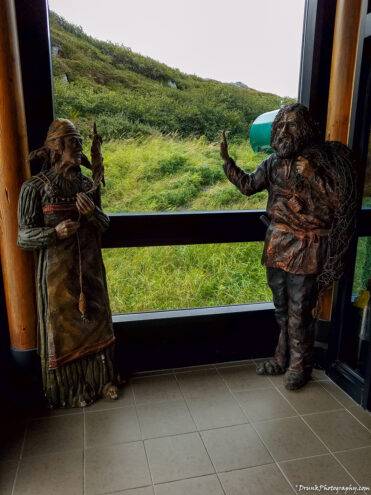
Like I keep saying, I take trips that these people my age don’t think are fun and entertaining, so I just ditch them and go myself, to experience cultures and learn something that doesn’t translate into something worthy of social media attention (apparently) but I still share anyway, because there are people who want to go explore things and not just be a tourist. Another thing, I’m also known for doing, is I get hyped up to go travel, to check out something, after checking out scenery, and history, I see in video games. One such game, as it relates to this blog entry, is Assassin’s Creed: Valhalla, which centers on Viking conquests and it made me want to revisit some things I wrote earlier about some Viking-themed trips I took, previously. On one trip, the most notable, I went to L’Anse aux Meadows (butchered French for “Jellyfish Cove”- the real origin of name is still a mystery they today think was supposed to be “L’Anse à la Médée” aka Medea Cove, where Medea was the name of a french ship from 1862. Médée BAY is north of the Viking settlement so who knows. 🤷🏽), Newfoundland and Labrador, Canada to see this Viking settlement. L’Anse aux Meadows is on the northern peninsula, which is Newfoundland, not Labrador, technically, where the two bodies are land are split by the Gulf of Lawrence. Thanks to the work of Ingstad, it turned out that the northern peninsula was once inhabited by the Norse (the Vikings), long before the French, Spanish (yes they were in Canada too) and British arrived, by almost 500 years, in Canada, making the Vikings the first documented European settlers in Canada and US (Christopher Columbus in US and John Cabot the Columbus in Canada). This is another reason people were not happy with Ingstad’s findings, because it made the American and Canadian heroes, Columbus and Cabot, not so great, and many people don’t like when you make their heroes not be ans the legends had them painted. Many people from Newfoundland didn’t even care to visit the site after that. It was still a European who did this, but it was not the right kind of European for their taste, I guess. 🤣 Hell, neither John Cabot or Christopher Columbus ever SET FOOT ON CANADIAN or UNITES STATES SOIL! Columbus went to the Caribbean and South America, not what we call the USA today, so that’s another blow to these figures. You, like me (initially), probably never knew that Vikings made it to Canada. I knew they went to Greenland, to the north east, but not Canada. It was only solid ice out there, and we know because the Dorset Indigenous tribes would have to go to Newfoundland to hunt for food since most of Labrador was too inhabitable, but that is next to Greenland. They had to go to L’Anse aux Meadows and that area on the peninsula, which meant they met each other at some point around the L’Anse aux Meadows area. That would be because most texts that existed when we all grew up said that the Vikings never came to North America. That’s what I learned in school, like most people did, that’s what we saw on TV, we heard of Scandinavia, Greenland and Iceland. Oh, and for the record, another thing people don’t know, IRISH and SCOTTISH people can come from Viking blood too, because Vikings conquered all of those small islands surrounding UK, and willfully mixed with the Gaels when they made life in Ireland and were the original inhabitants of the Ireland and surround islands. They spoke Gaelic, thus were called Gaels, another thing you don’t learn in school. You. see it all the time in TV shows where Vikings are fighting English people, well this is what they’re talking about, fighting in these area with Vikings. A lot of the anti-English sentiment also stems from this conflict history.
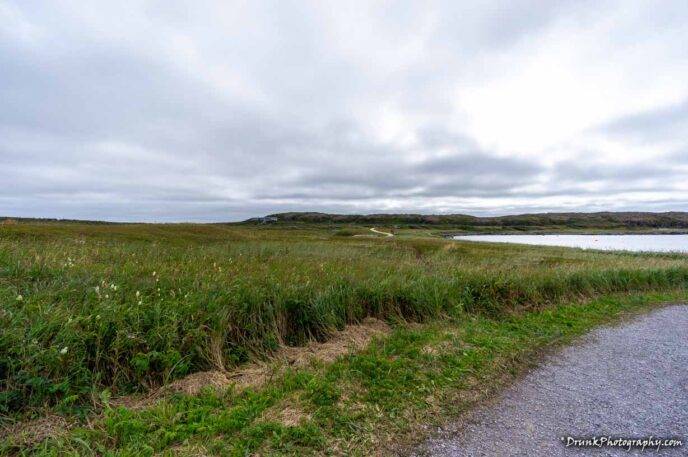

So, I didn’t know what to believe when I actually arrived at L’Anse aux Meadows and saw they they had a whole recreated Viking village and the site claimed that they built the site in the same style of structures that would have been there and that the things they dug up were authentically Norse. The people I went with were from Canada and they also didn’t believe this was true, that Vikings ever came to North America. All the science was always there to prove this, and finally it’s being recognized worldwide, due to that new-not-so-new-to-Canada news that Vikings arrived at L’Anse aux Meadows. For years, the world said that Newfoundland, Canada was lying about the history of the Vikings in there part of the country, but now who’s laughing, they were right all along, since the 1960! Newfoundlanders proved that what they dug up were the true foundations that were just like the ones found in Iceland and Greenland, with the peat on the roofs and tools used in those countries too. L’Anse aux Meadows’ viking scene is set at around the year 1000 to 1021 (scientists used radiocarbon dating to measure radioactive isotope of carbon present in trees to predict age), the 11th century, that meant then that it must have been associated with legendary Norse explorer Leif Eriksson, son of legendary the other legendary Norse explorer Eric the Red, who “discovered” (I hate that word with regards to Europeans) Greenland. Leif the Lucky, as he as also known as, was the top Norse explorer who lived at this time and there is no mistaking it that he had to be the one who found the empty land and set up on it because they found evidence pertaining to the journaling he was doing, which we now know in the current times as the Vinland Sagas – no, not the anime series. VIN is seed in many languages as reference to WINE, which is ‘vinum’ in norse, vino in Spanish/Italian, and we call places where you curate grapevines for wine making, ‘vineyards.’ South of where they landed is known for grapes perfect for wine making and wine was a symbol of status and wealth in Norse culture, so of course it was of interest to them. Leif was indicated that he was in the lane of grapes that could be used to make unlimited wine, and he was coming in from the Gulf of Saint Lawrence, so L’Anse aux Meadows is what he was talking about, that whole northern coast of Newfoundland. The reason he went that direction is because there were already 2 other detailed sagas by Vikings, the ‘Greenlander’s Saga’ (by Bjarni Herjólfsson) and the ‘Erik the Red Saga’ (By Erik the Red) which journaled their experiences but contradicted each other quiet heavily, so, Leif set out to validate the Greenlander’s Saga accounts, which led him further west, and that’s why he landed in Newfoundland. Both of those previous couldn’t be true if they contradicted the tales of arriving to Vinland, so Leif set out to set the record straight. Bjarni Herjólfsson was the first to ever mention what would come to be know today as ‘North America’ but he was heading for Greenland and the winds threw him off too much westward so he was off track a bit when he spotted the land for North America, in the distance. Could that have been L’Anse aux Meadows? Leif thought so, apparently. It seems like L’Anse aux Meadows would fit a certain portion in the Greenlander’s Saga matched up if you look at the map.
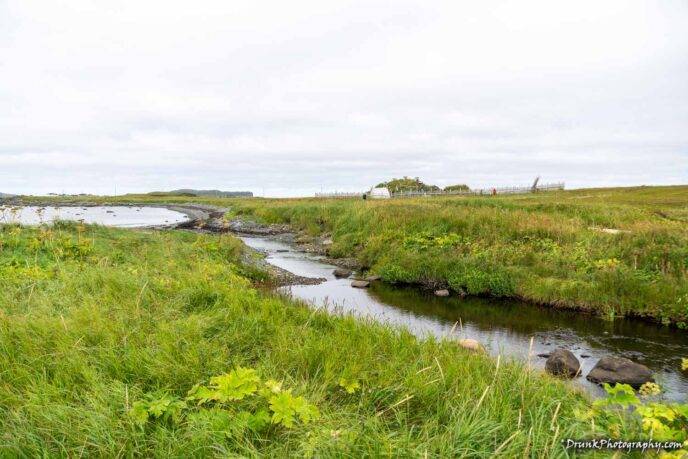
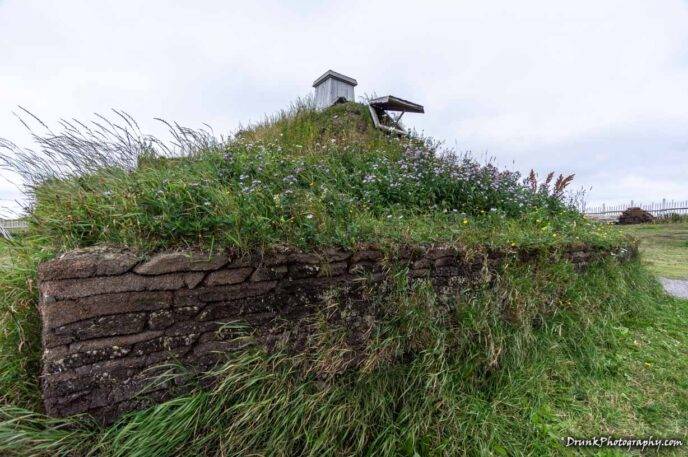
This was 15 years earlier than Leif arriving to the place that was referred to by Bjarni, which is current day L’Anse aux Meadows. Even some of the language that Erik described in Vinland Sagas was used to name areas of Newfoundland, like “FLATROCK,” which is a famous spot in Newfoundland but that was what Erik dubbed the whole Island, the land of flat rock and it’s true, if you’ve ever been. People use the stereotype of the Vikings, as only a bunch of marauders, to lead conclusions about how the Vikings could not have landed in North America, because they’re saying the Vikings would have conquered North America, which is dumb. The ‘advanced’ Europeans took centuries to do so and they came with advance weaponry, for the time. That’s not what Leif was there to do, and that is why the camp did not last long. Leif came with 35 men because he needed some muscle too, in case the area produced conflict, but needed them to go scout and hunt for food, while they conducted their work. They loved wine though, that stereotype was true, and that is what lead In other explorers to improve on Lief’s work, mainly a married couple Thorfinn and Gudrid Karlsefni. The Vikings came and had to find food and materials to craft with, and they got right to work, but things found at the site were not native to the specific area, which meant they were going far north and south to get some of the foods and material they ended up with, at the site, all of this was found at the excavation site through traces performed. They had wolves, foxes, bears, seals, walruses, whales but when the winters got longer and harsher, the area dried up because the animals couldn’t stand the weather, so the Norse had to venture out further to hunt. That may mean we may one day find more encampments! And if we don’t find more, then we know they left because there was nothing more to have, and went about their way exploring for more places or likely, returned back to Greenland and back to Europe, where all the stories and legends we see on TV are centered on. It is most likely that the resources in L’Anse aux Meadows ran out, at a certain point, so they just left. The Japanese read all 3 Viking Sagas and incorporated stories from them to make the anime series, and it’s wildly popular, which made me revisit this blog entry to spruce it up a little, to get you to find some interest in this history of L’Anse aux Meadows . It’s on Netflix right now, as a matter of fact, but in case you use other services, I’ve provided the Decider.com (best site to know here things are streaming) lists of the streaming services that are carrying this popular title so you check it too and stream this 48 episode, 2 season series. The Netflix link here. If you have Amazon Prime, it’s here. If you have Apple TV, it’s it here. Yeah, this series and history is THAT popular.

L’Anse aux Meadows has a total of 8 Norse buildings reconstructed from evidence of what would have existed at the time, by using places like Iceland as the marker, since the Vikings were from one or both of these places and the structures were identical in both of those countries, so it only made sense they’d be the same in Canada. You can also head north east a little more to find more recreated buildings in Norsehead. You will find a concentration of building in the area surrounded by a wood fence, and those are the 3 homes and an outside toolshed that the curators have placed tools inside of. They’re gone ahead and added more scenery there, because it started to boom as a tourist attraction, in recent years, after finally being recognized as legitimate. They’ve also since replaced a small boat in the yard (removed when I was there) of the long house area where the boat was strung up until the Viking took it down for traveling along the body of water north, Strait of Belle Isle, that is surrounding the house. These turf long houses are of much note and they are a special building, actually called longhouses. When you first lay eyes on the site, which is likely really going to be a mood when you go and it’s a cloudy day, as opposed to a day that is sunny, it’s going to set a mood like you’re in one of those medieval movies where they don’t use overly colorful scenery EVER, in Hollywood, to paint the dreary surrounds and condition of the time. Go back and look at some of your favorite stories, they don’t over saturate anything for this purpose. When you look at the scenery there, it looks like you’re in the Lord of the Rings movie or something, as if you’d expect a hobbit to come running out of one of the places, and I heard someone speaking inside of it, while I was outside taking pictures, and so I had to go figure out what the hell they were saying. I was sure there would be dwarfs there drinking lager out of huge chalices, swinging axes and singing Norse songs, if I ventured inside. It looked like Papa Smurf and Brainy Smurf would coming running out of this place, I was expecting costumed Disney-type characters to come running out. I had to get a close up look at those peat covered houses because it looked to me like they would collapse on me or something. When I first arrived there, the rest of the team was not with me in this section yet, so I didn’t even know that I could go inside of it at first, until I heard the people inside talking like they were from a TV show. I though it was video recording that was playing inside, until I heard and impromptu cough, and realized that’s a person live, inside, talking to someone in a pseudo British accent like on TV shows. I had to go look up what years it would have been if they came so much earlier than other Europeans that nobody believed Canada when they first made the claim that the Vikings came there. You can go in and try your hand at the games, sword fighting and such with the tools and props there, even blacksmithing. I know most of your touristy people want to only go places when it’s completely sunny outside, but this is not the place for that scene if you’re trying to immerse yourself in the scenery.

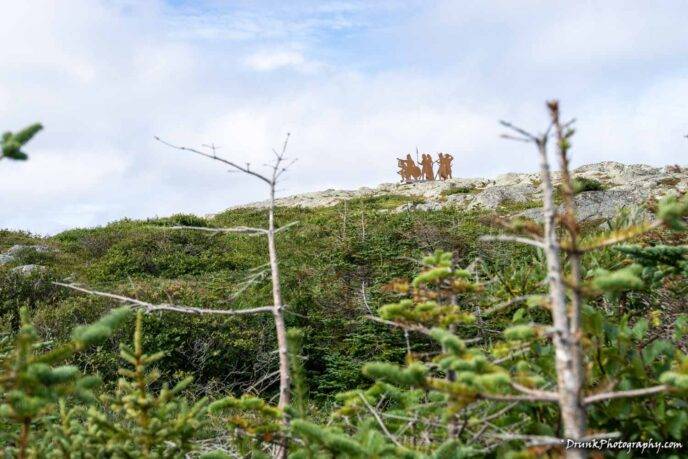
According to the documentation, the Vikings at L’Anse aux Meadows had only two encampments set up and depending on the seasons, they’d occupy. The northern encampment was call the “Fjord of Currents” (Straumfjord) and this was the basecape that all of the expeditions were conducted from. This was also where all the Vikings stayed when winter came. The other encampment, to the south, was called the “Tidal Estuary Lagoon” (Hóp), which was the farming encampment, where they found all the grapes and wood for construction and burning (heat). I wanted to see how they stay warm there, because it’s cool to cold for a lot of the year. If you look at the structures they have onsite, you’ll initially scoff at the thought that those could really serve as homes, especially in the winter. These replicas of the original Viking buildings are a must visit because the insides of the will amaze you as much as the inside of them will. The recreated structures are all made to scale, using history and real architects who studied the Norse structure and I couldn’t believe how well they kept in heat (it was 38 F / 3 C degrees outside when I was there), which was why there was always such low turnout to the site, but that’s change a lot since the Pandemic has concluded. So, here is the advantage of going in the Spring, when that weather will fluctuate a bit but it’s pretty cool there. If you go then, you will go into the buildings there, on a cool day, then the actors in there will have to start a fire, because they will be in there while they’re in character. Then, you will be able to feel how effectively created those replica houses are. That blew my mind completely! It was too windy outside so I had to retired from taking snapshots, and as soon as I entered the longhouse, I was floored by the heat! They lit the fire in the center room and from only 1 room, all of the rooms in that long house were above 80 F / 27 degrees! That was extremely impressive and that is an experience you are NOT TO MISS! it will show you how those Vikings were able to survive those cold times, because in the encampment to the north, it’s right on the water, and there are no mountains blocking any winds coming from ocean inbound. It’s that brisk cold wind that stings, and I originally doubted those buildings’ ability to hold heat against those brutal winters in Newfoundland, which that place is known for. Very great builders were these Vikings. The Vikings had to be skilled in many areas, especially in this encampments that were not going to be permanent. They did not bring fully armies of people, it was for exploration mainly, so ultimately, the Vikings were met with Indigenous people of the area, like the Dorset. That didn’t end well for the Vikings, they couldn’t sustain their footing in Newfoundland, after a period of successful trading with Indigenous people turned sour, and they got chased right out of Newfoundland, and went back to Greenland. They pissed off too many nations, and there were 5 different nations in the area at that time. More history is being revealed, so that 21 year time span is going to be expanded to longer periods, as more sites and data are found. The last leading theory if the Vikings were in that northern peninsula region for at most a century, according to this study!
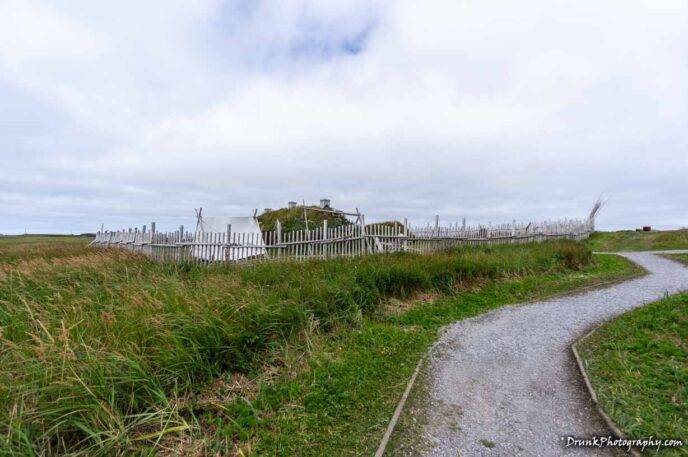

I have watched plenty of Viking shows, movies, etc and I had never known that they built like those turf Longhouses. Apparently, this is the typical style you would get from those coming from Greenland or Iceland, as Ingstad quickly pointed out, where you had to house teams, such as those that would be used to do those expeditions to find land. The Viking homes always contained multiple rooms for various things, when it’s built in longhouse form, like you see in the pictures here. The longhouse was the best thing about L’Anse aux Meadows so I spent more time there exploring all around the place. I thought the place would smell like fire all day, after they started that fire but they have chimney systems scattered throughout the home, keeping a nice temperature mix throughout. The Viking house is sacred and is one with the soul in Viking culture, so each one is made with careful consideration, as a personal reflection of the family and builder of the house. So I’d assume that since Vikings felt the home and the soul are bonded, and a Viking funeral requires that the other Vikings burn the bodies of the dead to free it of its ligaments; well, you’d have to burn the Viking home when it’s all over too, so the footprint is removed from this earth and releases to the universe. I always saw encampment with tents only, and a big Longhouse for more rich king types at home, which is most likely for the Vikings was on the move to invade someone, so it’s a quick setup and then done, but even those were burned eventually. It makes sense now, because the long house would for a military team like a bunker. They always burned down something to symbolize the end or point of no return of something. Funerals, encampments, etc, the END is burning that thing down to end that chapter of life. If they came for war, by boat they burned those after making landfall, because that signifies to the enemy that they are there to stay and they are playing for keeps! It’s why you won’t find many Viking ships, but they have one tiny one in this location on display. Then the other technique is to bury something. They’d not make this kind of setup that I saw unless it was a permanent home, I guess. If you saw it from afar, you’d not know it was a house, it just looks like a hill, thanks to the peat on top, so it’s a covert look to the untrained eye, from afar. You can see in Scandinavia, they have structures they put sod on top of structures still, in cabin/woods locations, as a nod to the earlier times. I went to farms like this and historic locations that maintained this feature. This is another protection from the cold, to put the sod on the roof with birch and bark on a sloped wood base, and that was a form on insulation that proved to be highly effective.
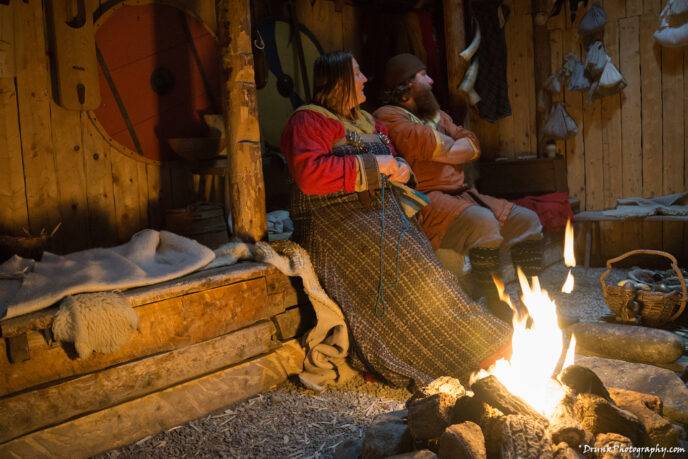
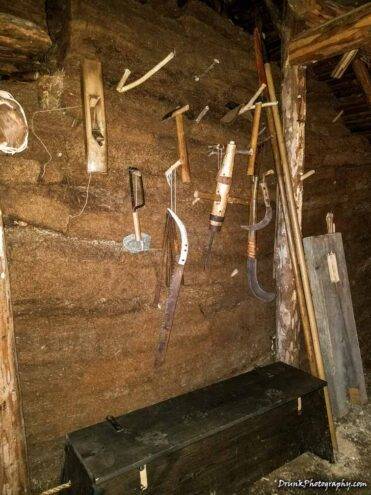
They had metal tools for building things, the Vikings were masters builders of tools too. I saw things like hammers, wrenches, and all kinds of things lined up in what was their toolboxes of the time. There were buckets just like you see in Hollywood movies and metal pails that are used for cooking/boiling food, over a fire, laying around the sites. It really creates some amazing scenes you came to see in movies which shows how those movies really did their homework. Vikings were master woodsmen, carpenters, builders, etc. I went searching around to see if they had tools that would be used to cut/chop up the wood, since they were clearly woodsmen and craftsmen, and I stumbled on the tool shed room where they had all kinds of things like saws and axes! Vikings had multiple variations of saws, long ones for cutting down trees and tiny hand-saws too and this was back in 1000 A.D.! They had some screwdriver kind of gadget that was huge, but they used it to fasten some kind of screw. Mind you, when they build this form on the longhouse, it was built to also contain the “garage” of the times, which is these wood and metal rooms to create things from. You can’t go dragging your crap into the main house, so you have the ‘mudroom’ if you will so put your dirty crap at. So rooms and shop were in the Longhouse here, a style known only as “HALL A“. When you see that kind of room, you know it’s for crew members. There is an actual tool shed, which is outside of the longhouse, and you’ll see that is like your toolshed you likely have in your backyard too. It’s all there. If you don’t feel like walking L’Anse aux Meadows, and you will be doing a lot of walking, you can hang out at the recreated encampment because there is much to see there. There are artifacts scattered about for you to inspect or interact with. You can actually go put on a helmet, hold a sword and don a shield like a Viking. We were all playing dress up, except I didn’t put those helmets on my actual hair, but on a hat I had on under the helmet. Everyone else was putting those props on themselves and didn’t care what they caught from it, like head lice. One guy was scratching his head a lot, a few days later. He likely caught crabs from that. The actors will let you play dress up and act with them, as Vikings. The Viking couple there (actors), both in full character, and talking like the show “Vikings.” They were good actors, they interacted with me and didn’t kill me, so that was good.Thank Oden for the fire being lit because it really was cold and I was under dressed, it was freezing out but this allowed us to enjoy the show and now waste the actors’ times. They continued to stay in character, they did not break character the whole time. They didn’t do things like excuse themselves to go take a phone call and smoke a cigarette. 🤣
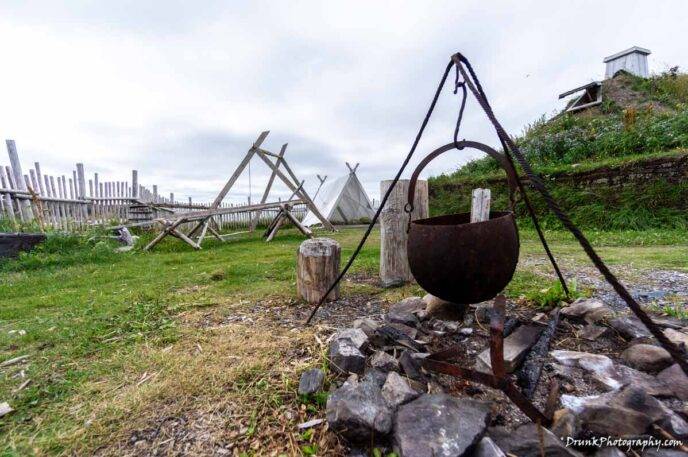
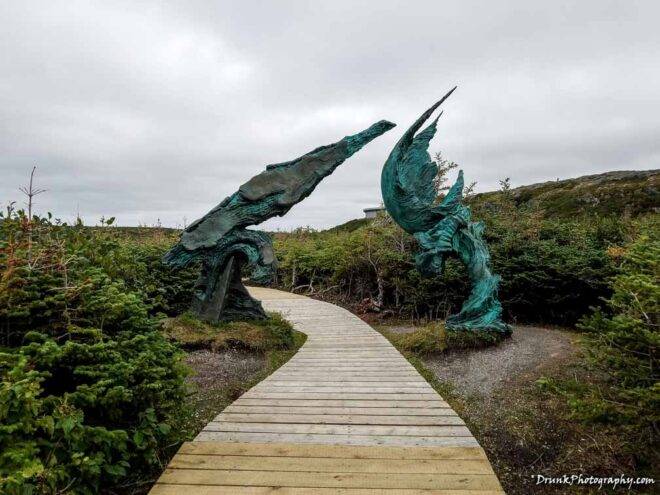
Those props in the house were all replicas, not dug up artifacts, otherwise they would not let us play with this stuff, it would be valuable to let people touch them, but they are real good replicas, the actors assured us of this. Like most of Newfoundland, the area of the L’Anse aux Meadows National Historic Site is pretty flat; however, there will be quite a bit of walking if you wish to see the whole place’s exterior, along with the Birchy Nuddick Trail, which will take you roughly an hour to complete. I love to walk and get a workout up so I walked it and enjoyed the peaceful landscape. Since it was Spring, not many tourists were up there yet. An additional 45 minutes will be needed if you are going to traverse any inner trails within the coastal setup. It’s probably wise to go on a day where it is sunny if you want to walk, but go on a day where it can be cloudy, but low chance of precipitation, if you want that dreary look you see in TV and movies, and really take the scene in. In general, go during an off-season (e.g., after labor day), if you actually want to see something without a thousand people all in your way. It’s truly a beautiful thing, get down to the pond, see the coast and the sites, if you wish to experience a nice, relaxing walk. If you go, you should plan a week, and fly into Deer Lake Airport. It puts you in a great place to explore all of the amazing natural and tourist spots, all along the highway 430, aka “The Viking Trail,” to highway 436, very easy, and you can hit up many great sites in a row, 1 by 1, as you make your way to L’Anse aux Meadows. You should also hit up PARCS CANADA and then plot the daily journeys, I recommend you do the same since it used to be about $5k to get out to this region, and now it’s less than $2k you will spend for a full week there, and see all the highlights, including going over the Labrador! If you get on a tour, here is an idea of how silly prices are and why you shouldn’t do it for until they can get prices lower than $4K. Those prices are ridiculous! You can do Europe 3 times over for that price! You don’t even need to drive the whole way either, there are many transportation services out there now, so you can get on a bus to take you the whole way or hire drivers for cheap. So go see some Vikings, hell your BLUETOOTH was inspired by lovers of their Norse history, they’re so intertwined with a lot of things we like today, why not give go check out how they lived? Vikings were badass! You may want to hire a guide at L’Anse aux Meadows area because without a guide, you’re going to miss ALL of the context, and I’m writing this with the help of video I recorded. You’ll hate yourself if you don’t know the purpose of what you’re blindly looking at.
As always, the finished products can be found on the main site of www.drunkphotography.com.
